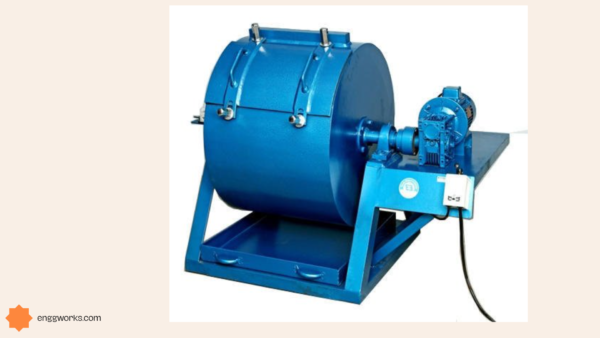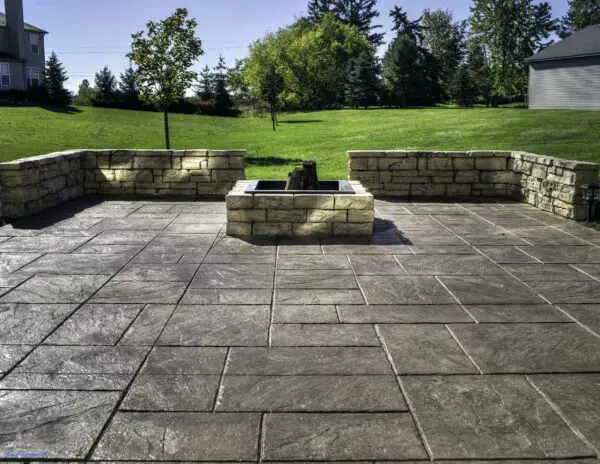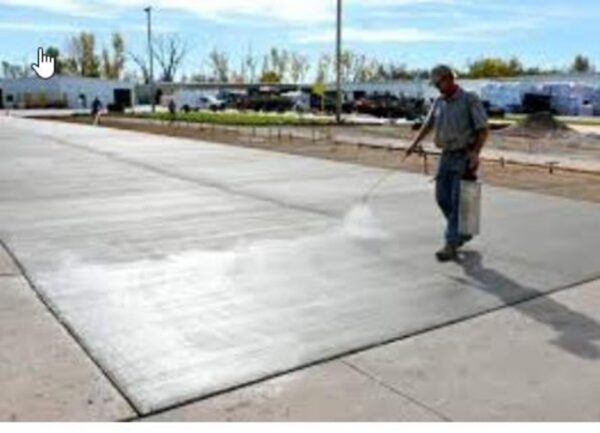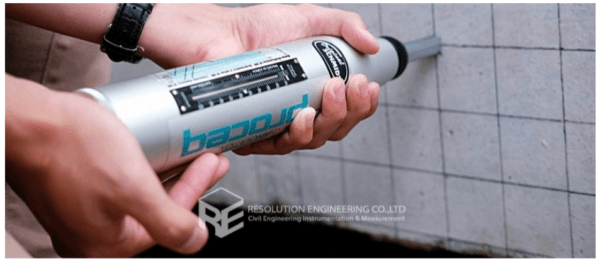Post-tensioned concrete is an advanced method of reinforcing concrete elements like slabs, beams, and walls. It involves tensioning high-strength steel strands inside plastic ducts cast into the concrete during construction.
Using hydraulic jacks, technicians stretch the steel cables to over 70% of their tensile capacity after the surrounding concrete has cured. This puts the concrete into active compression, countering stresses from applied service loads that could otherwise cause flexural cracks or deformation over time.
Compared to conventionally reinforced concrete with passive rebar only, post-tensioned members can have longer, column-free spans and also allows adaptable structures since cables can be re-tightened years later if needed.
Understanding the mechanics, specialized materials, detailing, installation procedures, and maintenance requirements is key for civil engineers employing post-tensioning technology which continues advancing across many structural applications.
Advantages of Post-Tension Concrete
Compared to conventionally reinforced concrete, post-tensioned concrete offers:
- Longer Spans – Post-tensioning allows longer spans between columns due to active strengthening from stressed cables in two directions. This enables open, column-free layouts.
- Thinner Sections – With less passive reinforcing required, post-tensioned beams, slabs and walls can use less concrete material for equivalent performance.
- Crack Control – The pre-compressed concrete minimizes cracks from shrinkage or service loads better than conventionally reinforced concrete.
- Adaptability – If supported loads increase in an existing structure, additional post-tensioning can re-stress cables years later to increase capacity. Prestress levels can even be seasonally adjusted.
- Economics – Despite specialized materials, the longer spans and thinner sections enabled by post-tensioning optimize material use requiring less concrete and rebar. This reduces costs.
- Durability – Properly designed and installed post-tensioning provides structures with enhanced corrosion resistance and resilience to fatigue or impacts.
- Sustainability – With good detailing, post-tensioned concrete achieves longer service life than conventional reinforcement, reducing life cycle impacts.
Overall, post-tensioning improves structural behavior, efficiency, and adaptability compared to traditional reinforcement, suiting many modern applications.
Careful design, detailing and construction practice unlocks these advantages over standard concrete.
working principle of Post-Tensioning Concrete
The working principle is tensioned steel cables generating internal compressive forces within concrete, which allows optimized material use as this pre-compression counteracts tensile stress demands from service conditions over the design.
In detail , after the concrete with high strength steel strands or cable hardens, the cables are pulled tight (tensioned) using hydraulic jacks that grip the ends. This draws the cables up to 75% of their ultimate tensile strength.
The tensioned cables apply a significant compressive force onto the concrete from inside, putting it into compression instead of tension.
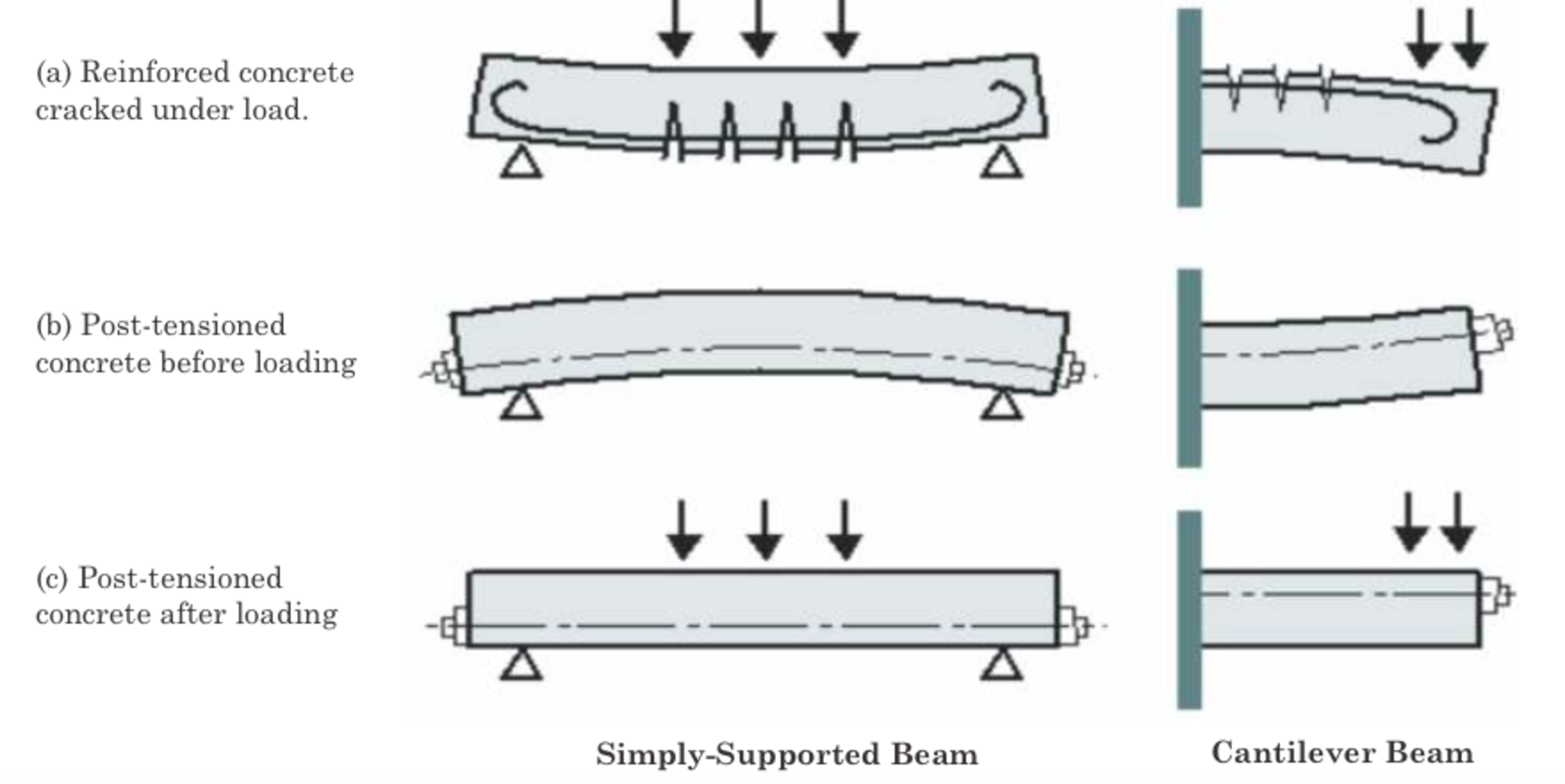
This counteracts natural tendencies for concrete to crack under applied loads that try to stretch or bend structural members like beams or slabs.
Thus post-tensioned concrete is essentially in a compressed state even before service loads like self-weight, live occupancy or wind are applied.
Post-Tensioning Materials Used in Concrete
Common post-tensioning materials include:
- High-strength steel strands – Seven wire low relaxation steel strands wrapped in HDPE sheathing for corrosion protection. Typically 0.5” or 0.6″ diameter.
- High-strength bars – Solid or hollow steel bars up to 2” diameter for specialized applications.
- Monostrand tendons – Single stabilized steel wires encased in sheathing. Used in smaller slabs.
- Anchorages – Steel wedge plate and conical chuck assemblies with grouted encapsulation. Transmit cable forces safely into concrete.
Careful material specification suits different design requirements and site conditions.
Post-Tensioning Concrete Failures
Post-tensioning defects mainly involve water entering ducts then reaching susceptible steel. Effects worsen over time but can manifest suddenly. Common failure modes are:
- Tendon corrosion – Moisture corrodes steel cables reducing strength.
- Tendon relaxation – Stress relaxation from repetitive loads or concrete creep releases tension.
- Tendon fracture – Severed brittle strands lose all pre-compression capacity.
Avoiding failures requires waterproofing, leak monitoring, selective re-stressing, and good concrete practices.
Design of Post-Tensioned Concrete Slabs
Structural design of post-tensioned slabs calculates required prestress levels to offset service deflections and cracking potential using factors like:
- Slab span, thickness, loading
- Support locations
- Cable layout and profiling
- Concrete strength
- Prestress losses from friction, anchorage slip, concrete relaxation
Design optimizes tensioning for adequate camber, stiffness and crack control. Using specialty software can iterate configurations efficiently toward code compliance.

Cost of Post Tension Concrete Slabs
Though needing less volume, post-tensioned slab costs run $8-20 per square foot installed versus $5-12 for conventional slabs.
The specialized materials, detailing, and certified PT installers add expenses.
However lifetime maintenance savings from resilience to cracks and loads can offset upfront premiums.
Advantages of Post-Tensioned Concrete in Construction
In addition to material savings from strength optimization, post-tensioning allows:
- Long, column-free spans thanks to two-way cable reinforcement
- Reduced overall structural depth for the same spans
- Higher damping for better seismic resilience
- Accommodation of future additional loads or expansions through re-stressing capabilities
- Adaptability suits many modern applications and design approaches
Post-Tension Cabling Installation Sequence
Cables tensioning involves:
- Positioning strands in ducts with temporary top anchors
- Attaching strong back to strand tail and hydraulic jack
- Stressing tendon to required force dynamically measured on gauges
- Locking off wedges then injecting protective filler like cement or wax
The systematic process needs certified technicians to ensure target pre-stressing levels suiting design are properly achieved.
Specifying Post-Tensioning Tendons for Concrete
Post-tensioning designs specify:
- Cable layouts and duct sizing
- Anchorage types and locations
- Prestress levels relating to concrete strength
- Requirements like monostrand or multi-strand bundles
- Acceptable steel grades, coatings and sheathing
- Filler products for corrosion protection once stressed
Proper specifications balance structural performance, constructability, durability and costs.
Inspection Requirements for Post-Tensioned Structures
Thorough inspections at initial construction and periodic maintenance checks after occupancy catch post-tensioning defects before failure. Activities like removing panel sections to visually check innerduct conditions, sounding strands with hammers, and using electrochemical tests assess corrosion detect deteriorating cables. Testing helps prioritize protective remediation or system replacements.
Repairing Post-Tensioned Concrete Cracks
Unlike conventionally reinforced concrete, cracked post-tensioned elements feature live steel strands vulnerable to moisture and contaminant ingress. Crack repairs involve injection epoxy sealing then coating the epoxy barrier for redundancy against leaks reaching cable interiors. The rigorous, skilled process suits certified specialty contractors.
Waterproofing Horizontal Post-Tension Slabs
Waterproofing helps durable slabs but the critical nature of post-tensioning ducts means membranes and detailing requires special attention including:
- Coordinating waterproofing, tendon layouts and edge penetrations early in design
- Selecting seam-free sheet membranes under slabs along with added protection over cables
- Rigorous inspection and leak testing before covering up tendons
- Catching and repairing defects through the warranty period
Post-Tension vs Pretensioned Concrete
Pre-tensioned concrete is cast around already-tensioned steel. Strands bond to concrete as it cures until cutting tendons transfers stress forces. This common method suits precast elements.
In contrast, post-tensioning tensions cables after concrete hardens then encases them in protective filler. Each method suits different applications based on design flexibility, speed, costs and structural behaviors.
Differences Between Bonded and Unbonded Post-Tensioning
Bonded systems grout cables inside ducts to adhere with surrounding concrete once stressed. This directly engages concrete in reinforcing action but moisture reaches steel easier.
Unbonded tendons use waxed or greased sheathing around strands inside ducts to stay isolated.
This sacrifices composite interaction for more durable moisture protection and alterable profiles. Different projects adopt either approach as suitable to service conditions and design factors.
Conclusion
With good structural design, materials, skilled installation, maintenance, and repair when needed, post-tensioned concrete provides highly optimized, crack-resistant structures for demanding applications. The adaptable reinforcing method suits many modern requirements but needs coordinated planning plus quality execution to maximize concrete life span and performance.

